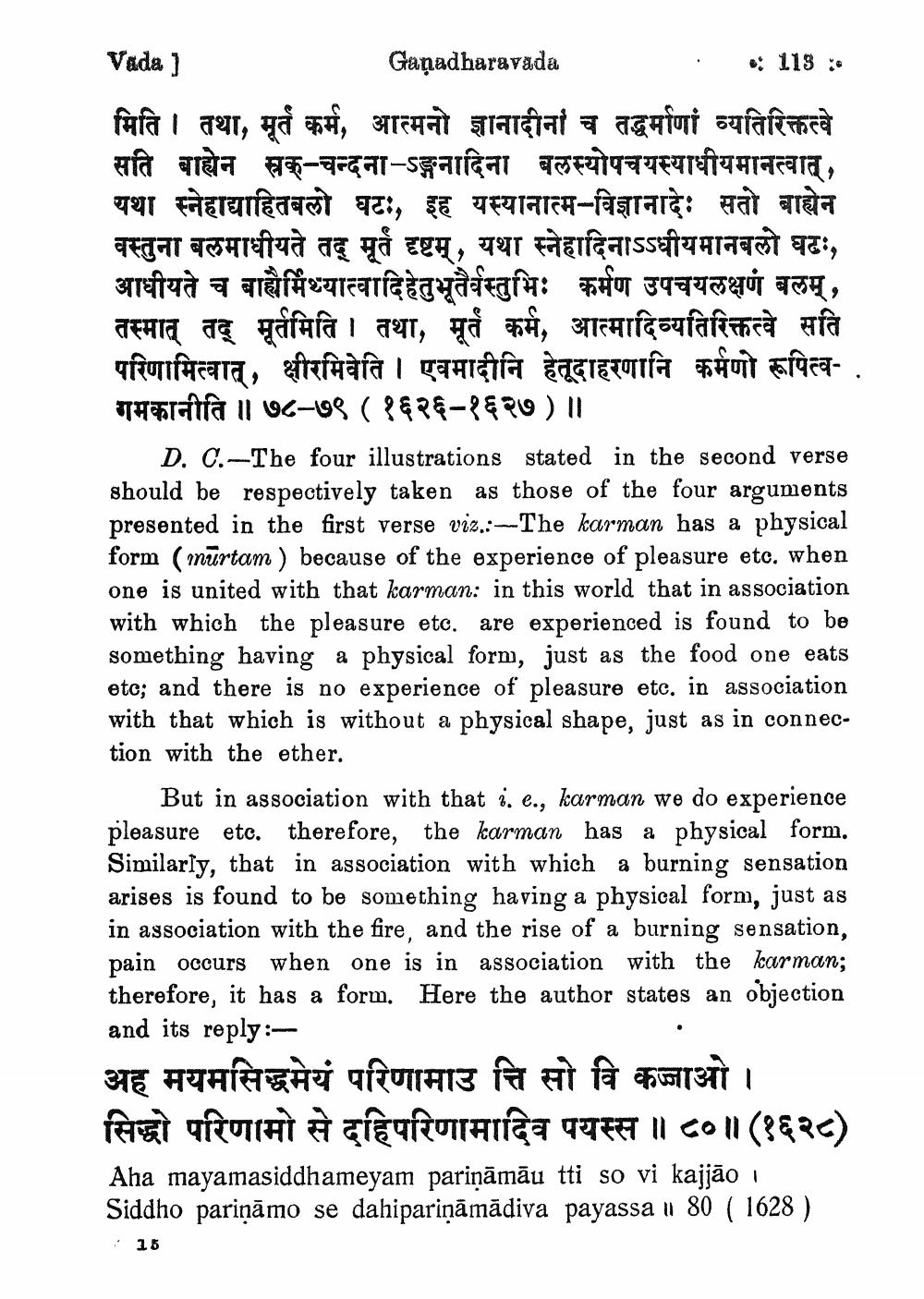________________
Vada ] Gañadharavada
. : 118 : मिति । तथा, मूर्त कर्म, आत्मनो ज्ञानादीनां च तद्धर्माणां व्यतिरिक्तत्वे सति बाह्येन सक्-चन्दना-ऽङ्गनादिना बलस्योपचयस्याधीयमानत्वात् , यथा स्नेहाद्याहितबलो घटः, इह यस्यानात्म-विज्ञानादेः सतो बाह्येन वस्तुना बलमाधीयते तद् मूर्त दृष्टम् , यथा स्नेहादिनाऽऽधीयमानबलो घटः, आधीयते च बार्मिथ्यात्वादिहेतुभूतैर्वस्तुभिः कर्मण उपचयलक्षणं बलम् , तस्मात् तद् मूर्तमिति । तथा, मूर्त कर्म, आत्मादिव्यतिरिक्तत्वे सति परिणामित्वात् , क्षीरमिवेति । एवमादीनि हेतूदाहरणानि कर्मणो रूपित्व- . गमकानीति ॥ ७८-७९ (१६२६-१६२७ )॥ ____D. C.-The four illustrations stated in the second verse should be respectively taken as those of the four arguments presented in the first verse viz.:--The karman has a physical form (mūrtam ) because of the experience of pleasure etc. when one is united with that karman: in this world that in association with which the pleasure etc. are experienced is found to be something having a physical form, just as the food one eats etc; and there is no experience of pleasure etc, in association with that which is without a physical shape, just as in connection with the ether.
But in association with that i. e., karman we do experience pleasure etc. therefore, the karman has a physical form. Similarly, that in association with which a burning sensation arises is found to be something having a physical form, just as in association with the fire, and the rise of a burning sensation, pain occurs when one is in association with the karman; therefore, it has a form. Here the author states an objection and its reply:
अह मयमसिद्धमेयं परिणामाउ त्ति सो वि कज्जाओ। सिद्धो परिणामो से दहिपरिणामादिव पयस्स ॥ ८०॥ (१६२८)
Aha mayamasiddhameyam pariņāmāu tti so vi kajjāo i Siddho pariņāmo se dahipariņāmādiva payassa u 80 ( 1628 )
16




